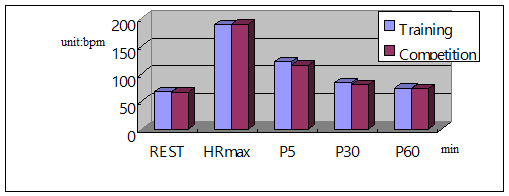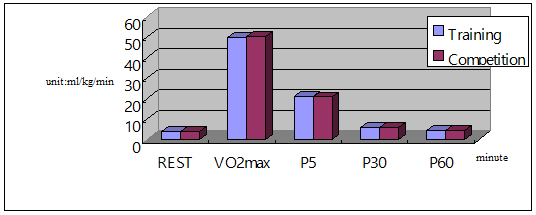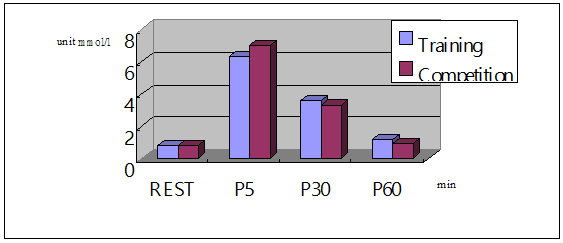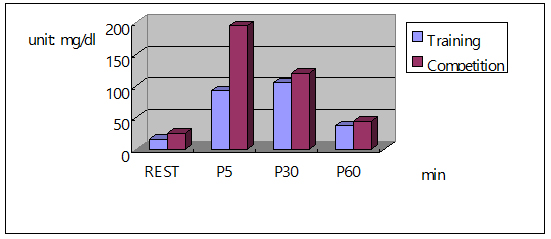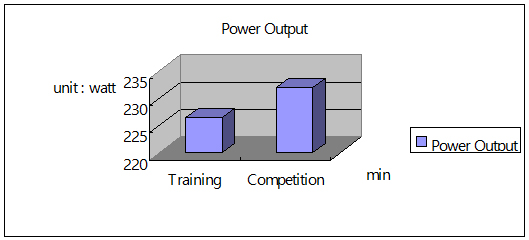Consumer Experience Tourism and Brand Bonding: A Look at Sport-Related Marketers
ABSTRACT
This manuscript reviews the growing use of manufacturing plant tours,
company museums, and company visitor centers by sport-related marketers
(equipment manufacturers, venues, etc) to cultivate relationships with
existing and potential consumers. Consumer Experience Tourism provides
the user (i.e., the consumer) with an experience regarding a product,
its operation, production process, history, and historical significance.
Such brand bonding may contribute to higher levels of involvement with
a product/brand and brand loyalty. Ultimately, the bond between consumers
and brands may be strengthened by the availability of such consumer experiences.
Such tourism opportunities provided by sport-related firms are profiled.
INTRODUCTION
The National Sporting Goods Association tracks the annual sales of sports
equipment, footwear, clothing, and recreational transportation (such as
bicycles, pleasure boats, RVs, and snowmobiles). For 2003, it is estimated
these four product categories combined for almost $80 billion in sales
(sports equipment, $22.2 billion; footwear, $14.4 billion; clothing, $10.1
billion; and recreational transportation, $40 billion (please see nsga.org).
The Relationship Marketing orientation has prompted brand managers to
seek new and innovative ways of creating long-lasting, mutually-beneficial
relationships (or bonds) with a most important asset; namely, their customers.
Increasingly, brand managers are recognizing the opportunity to showcase
a product’s creation and/or evolution as an important catalyst for
forging stronger bonds with consumers. So, interested consumers/tourists
can witness the production of such items as Calloway Golf Clubs, Fleetwood
RVs, Louisville Slugger Baseball Bats, Trek Bicycles, and Harley-Davidson
Motorcycles.
The purpose of this manuscript is to evaluate the growing use of manufacturing
plant tours, company museums, and company visitor centers by sport-related
markets to cultivate stronger relationships with consumers and to (hopefully)
stimulate greater brand loyalty. First, the concept of Consumer Experience
Tourism is defined. Second, the underlying interest in this type of tourism
activity is reviewed. Third, the target consumers for such tourism venues
are examined. Next, existing Consumer Experience Tourism efforts of sport-related
marketers are profiled. Finally, the desired outcomes of these efforts
are discussed.
CONSUMER EXPERIENCE TOURISM
Manufacturing plant tours, company museums, and company visitor centers
represent a segment of tourism known by different names: manufacturing
tourism, industrial attractions, industrial tourism, and industrial heritage
tourism. The shared desire of such facilities is to establish a bond between
a consumer and brand as the consumer learns about the brand, its operation,
production process, history, and historical significance. The term “Consumer
Experience Tourism” represents a unifying theme for this segment
of the tourism industry. This term captures the consumer’s ability
to discover more about the brands they consume while manufacturers can
forge closer relationships with those consumers during the 30-120 minutes
of time spent as the facility’s guests (Mitchell and Mitchell 2000,
2001, 2002; Mitchell and Orwig 2002). (The abbreviation CET will be used
throughout the manuscript to represent Consumer Experience Tourism.)
Involvement With a Brand
Brand managers seek to address consumer needs at three levels: functional
(providing solutions to consumer problems); symbolic (providing satisfaction
of psychological desires); and experiential (providing sensory pleasure,
variety, and cognitive stimulation) (Park, Jaworski, and MacInnis, 1986).
CET can strengthen the bond between consumers and brands by providing
a visual presentation of the brand, its operation, production process,
history, and historical significance. Such a bond may be viewed as an
increased level of personal involvement with the brand and (assumedly)
translates into greater brand loyalty. For example, a parent seeking to
cultivate a child’s interest in baseball can take that child to
the Louisville Slugger tour (Louisville, KY).
Cognitive involvement reflects a consumer’s interest in thinking
(or learning more) about a product (Park and Young, 1986). CET may increase
the consumer’s level of cognitive involvement by stimulating thinking
about the brand and its production processes. So, an active golfer may
appreciate witnessing the manufacturing processes used by Karsten Manufacturing
(i.e., Ping) (Phoenix, AZ) or Calloway (Carlsbad, CA). Further, the positive
word-of-mouth communication stimulated by satisfied visitors may be deemed
more credible than other paid forms of promotion.
INTEREST IN CONSUMER EXPERIENCE TOURISM
Many people think of manufacturing plant tours, company museums, and
company visitor centers as low-cost entertainment (and educational) options
for parents with children because such tours are typically free or require
only a nominal fee (Lukas, 1998). While this is a key target market and
a benefit the consumer may seek, the root cause of this fascination runs
much deeper.
Harris (1989) and Prentice (1993) point out that factories and mines
have historically employed a large percentage of the American workforce.
The shift to a service economy takes individuals out of the factories.
This removes people spatially and culturally from the manufacturing sector
providing less contact and little first-hand knowledge of industrial work.
The plant tour creates a novel and nostalgic view of industrial work,
which in turn feeds tourist interest in manufacturing processes. Harris
and Prentice further note that many younger workers’ lack of factory
work experience progresses naturally toward an increasing curiosity about
the topic.
Older employees may relish the experience of “returning to their
roots”. Rudd and Davis (1998) identify the industrial revolution
as a defining event in American history with company plant tours providing
users a look at our collective past. Richards (1996) notes the industrial
revolution created an era where the transition from modern to obsolete
occurs more rapidly. As such, products of older technology are considered
cultural and historical artifacts creating feelings of nostalgia among
society. Company museums or visitor centers capitalize on these emotions
by providing a sentimental, bonding experience between buyer and brand.
The “Retro Example”
The current interest in retro sports clothing is a manifestation of
this interest, even fascination, with the past. All four major North American
sports leagues are aggressively pursuing this growing market (Finney 2003).
Throwback jerseys and other merchandise have become a $1 billion global
industry. The National Basketball Association (or, NBA) sold over $400
million worth of its Hardwood Classics in 2002. The National Hockey League
(or, NHL) is approaching $250 million in vintage merchandise sales. It
is interesting to note that many of these jerseys, ball caps, and other
items represent teams that no longer exist (i.e., Winnipeg Jets or Quebec
Nordiques) or former stars (i.e., Bobby Clarke) (Westhead 2003). The Negro
Leagued Baseball Museum (Kansas City, MO) considers such merchandising
initiatives an opportunity to educate younger fans about an important
part of American and sport history (Spellman 2003).
Sports venues designed as “retro” or “throw-back”
facilities are another interesting manifestation of this interest in the
game’s history. While Wrigley Field, Fenway Park, and Yankee Stadium
continue to be held in high regard for their historic value, newer ballparks
have been designed to capture the old ambiance of a day at the park while
enhancing customer comfort. Such parks as PNC Park (Pittsburgh Pirates),
Jacobs Field (Cleveland Indians), Camden Yards (Baltimore Orioles), Comerica
Park (Detroit Tigers), or Conseco Fieldhouse (Indiana Pacers) have embraced
the past while enhancing fan (and player) comfort.
TARGET CONSUMERS FOR CONSUMER EXPERIENCE TOURISM
A manufacturer can use its physical facilities to establish (or strengthen)
the bond with a variety of parties. The target consumers for CET
can be divided into three categories: current and potential consumers,
business partners, and community stakeholders.
Bonding With Consumers
Manufacturing plant tours, company museums, and company visitor centers
have become a low-cost entertainment option for families, community groups,
business travelers, and others. They provide a day trip option for local
residents. Schools also benefit through field trips for area students
and teachers. Business travelers become aware of best practices from firms
in both related and unrelated industries (Axelrod and Brumberg 1997).
Prentice (1993) notes that areas with large numbers of business travelers
are particularly fertile for the development of such a tourism venue as
travelers can invest a small amount of time and have a valuable experience
with a brand. So, a salesperson can spend approximately 1 hour at the
BMW Zentrum in Greer, SC as they travel the Greenville-Spartanburg area
or as they shuttle from Charlotte to Atlanta.
Bonding With Business Partners
Though business associates are also frequently users of a brand, their
interests are typically more professional than personal. Lucas (1998)
suggests, “museums create the specter of the Wizard of Oz, but factory
tours provide a glimpse of the man behind the curtain.” Business
relationships enhanced by CET include corporate managers, future employees,
new sales agents, industrial suppliers, shareholders, and others. Plant
tours provide corporate managers with an enhanced understanding of how
manufacturing capabilities contribute to a company’s strength in the marketplace.
The plant tour may also be an effective means of identifying and recruiting
future employees by creating interest in the company’s manufacturing
processes (Day, 1990). Upton (1997) suggests that everyone who interacts
with a manufacturing plant (i.e., buyers, suppliers, managers, employees,
and so on) benefits from a comprehensive look at the manufacturing process.
Bonding With Community Stakeholders
Plant tours may be an effective means of communicating with regulatory
agencies and/or public interest groups. For instance, Nike commissioned
a panel to review its operations in China, Indonesia, and Vietnam to counter
perceptions of unfair labor practices and working conditions. The review
process included on-site plant tours and visits with local employees.
The company received a favorable review with respect to this volatile
public relations issue (Neuborne, 1997). Conducting tours of new facilities
during grand openings is commonly practiced, with target consumers including
shareholders, politicians, dignitaries and reporters. While target audiences
may have individual motivations for taking such a tour and may seek different
outcomes from it, it is certain that people are interested in the work
of others.
CONSUMER EXPERIENCE TOURISM EFFORTS BY SPORT MARKETERS
Currently, a number of sport marketers provide manufacturing plant tours,
company museums, and company visitor centers to support their products.
These firms compete in such diverse product categories as baseball/softball
equipment, golf clubs, fishing equipment, boats, and others (see Table
One).
Table One
Consumer Experience Tourism Offerings of Sport Equipment Manufacturers
| Company Name | Location | Product Category |
| Karsten Manufacturing (Ping) | Phoenix, AZ | Golf Equipment |
| Calloway Golf | Carlsbad, CA | Golf Equipment |
| Correct Craft (Ski Nautiques water-ski boats) | Orlando, FL | Boats |
| Coachman RVs | Middlebury, IN | RVs |
| Jayco RVs | Middlebury, IN | RVs |
| Hillerich and Bradsby (Louisville Slugger, PowerBilt) |
Louisville, KY | Baseball Equipment Golf Equipment |
| Arctco (Arctic Cat) | Thief River Falls, MN | Snowmobiles |
| Christian Brothers | Warroad, MN | Hockey Sticks |
| Polaris | Roseau, MN | Snowmobiles |
| Airstream | Jackson Center, OH | RVs |
| Goodyear | Akron, OH | Tires |
| Wooden Touch Putters (Oregon Connection) | Coos Bay, OR | Golf Equipment |
| Luhr-Jensen Lures | Hood River, OR | Fishing Equipment |
| Harley-Davidson | York, PA | Motorcycles |
| Vanguard Racing Sailboats | Bristol, RI | Boats |
| Worth | Tullahoma, TN | Baseball and Softball Equipment |
| Nocona Athletic | Nocona, TX | Baseball and Football Equipment |
| K2 | Vashon, WA | Skiing Equipment |
| Trek | Waterloo, WI | Bicycles |
Source: Axelrod, K. and B. Brumberg (1997), Watch
It Made in the U.S.A., Sante Fe, NM: John Muir Publications.
A list of automotive-related tours is separated and presented in Table
Two.
Table Two
Consumer Experience Tourism Offerings of Automobile Manufacturers
| Company Name | Location | Product Category |
| Mercedes Benz | Vance, AL | Automobiles |
| Mitsubishi Automobile | Normal, IL | Automobiles |
| Corvette | Bowling Green, KY | Automobiles |
| Ford | Louisville, KYEdison, NJ | Automobiles |
| Toyota | Georgetown, KY | Automobiles |
| General Motors | Flint, MIJanesville, WI | Automobiles |
| Goodyear | Akron, OH | Tires |
| Honda | Marysville, OH | AutomobilesMotorcycles |
| BMW | Greer, SC | Automobiles |
| Nissan | Smyrna, TN | Automobiles |
| Saturn | Spring Hill, TN | Automobiles |
Source: Axelrod, K. and B. Brumberg (1997), Watch
It Made in the U.S.A., Sante
Fe, NM: John Muir Publications.
It should be noted that NASCAR drivers/owners have been particularly
active in embracing CET for their use. NASCAR fans can visit the working
garage of their favorite drivers and witness the preparation of the very
cars they will watch later at the track. The most popular destinations
for NASCAR fans include Joe Gibbs Racing, Hendrick Motor Sports, Dale
Earnhardt Incorporated, Petty Enterprises, and others. The majority of
such facilities are located in close proximity to Charlotte, NC. Additionally,
most larger racetracks provide tours of their facilities including garage
areas, pits, and grandstands. An example list (not exhaustive) of these
tracks is presented in Table Three.
Table Three
Example Motor Sport Tracks Offering Public Tours
| Name of Track | Location |
| Atlanta Motor Speedway | Atlanta, GA |
| Las Vegas Motorspeedway | Las Vegas, NV |
| Lowe’s Motor Speedway | Concord, NC |
| Daytona International Speedway | Daytona, FL |
| Texas Motor Speedway | Fort Worth, TX |
| Indianapolis Motor Speedway | Speedway, IN |
| Talladega Superspeedway | Talladega, AL |
| Kentucky Speedway | Sparta, KY |
| Kansas Speedway | Kansas City, KS |
Source: Original constructed from information gained
from nascar.com.
As new stadiums have been built for professional teams, their owners
have identified the value of opening their facilities to the general public
for tours. Fans can now tour such venues as Lincoln Financial Field (Philadelphia
Eagles, NFL), Invesco Field at Mile High (Denver Broncos, NFL), PNC Park
(Pittsburgh Pirates, MLB), Camden Yards (Baltimore Orioles, MLB), and
the American Airlines Center (Dallas Mavericks, NBA and Dallas Stars,
NHL). And, some older ballparks continue to welcome guests to take nostalgic
tours of their facilities, including Wrigley Field (Chicago Cubs, MLB),
Fenway Park (Boston Red Sox, MLB), Yankee Stadium (New York Yankees, MLB),
New Orleans Superdome (New Orleans Saints, NFL), and others.
Table Four
Additional Sport Halls of Fame
| Name | Location |
| Bowling Hall of Fame and Museum | St. Louis, MO |
| United States Golf Association Museum and Library | Far Hills, NJ |
| International Tennis Hall of Fame and Museum | Newport, RI |
| U.S. Bicycling Hall of Fame | Somerville, NJ |
| Lacrosse Hall of Fame | Baltimore, MD |
| World Figure Skating Museum and Hall of Fame | Colorado Springs, CO |
| America’s Cup Hall of Fame | Bristol, RI |
| Negro Leagues Baseball Museum | Kansas City, MO |
| United States Slo-Pitch Softball Hall of Fame | Petersburg, VA |
| Weightlifting Hall of Fame | York, PA |
Source: Arany, L. and A. Hobson (1998), Little
Museums: Over 1,000 Small (And Not-So-Small) American Showplaces,
Henry Holt, New York.
DESIRED OUTCOMES FROM CONSUMER EXPERIENCE TOURISM
Involvement theory suggests that consumers who have witnessed a product’s
production may become more brand loyal as a result of their identification
with the product, their familiarity with the production process, their
first-hand interaction with employees, first-hand witness to their quality
assurance processes, and other internal needs. As such, business outcomes
such as growth in buyer loyalty, sales, profitability, and market share
are some of the outcomes sought by companies that provide manufacturing
plant tours, company museums, and company visitor centers. It would be
myopic, however, to suggest CET is solely driven by the desire to increase
sales, profitability, or market share. Other outcomes sought focus on
company image, education, and open communication.
Company Image
Plant tours provide firms the opportunity to build a relationship with
local residents. This can be particularly important if the product or
production processes are perceived to pose environmental concerns (i.e.,
a car plant that produces air emissions). When public funds are used to
build sports arenas, owners may seek to enhance their image by showcasing
what the public has received for their investment.
Education
Plant tours provide a multi-sense experience for consumers, employees,
shareholders, suppliers, and other stakeholders. Consumers can bond with
brands. Company employees can visualize the larger manufacturing process
and appreciate the contribution their particular function or sub-routine
makes to the finished good. As noted earlier, the licensing of retro sports
images by the Negro League Museum (Baseball) allows younger consumers
(often African-Americans) to learn more about the historical significance
of the league and its players.
Salespeople, as well as external sales agents, can study the manufacturing
processes to be better prepared to answer (and anticipate) buyer questions.
For example, a sporting goods sales representative can better appreciate
the manufacturing processes used by Worth to produce its line of baseball
and softball equipment. This representative then carries this knowledge
into the marketplace. A firm’s shareholders (for example, Calloway
Golf, Ford, Goodyear, Harley-Davidson) can witness the processes used
by the firms in which they have an equity position. Finally, some academic
and professional associations include plant tours on their meeting agendas
for continuing education.
Open Communication
An open manufacturing process conveys to others an open communication
style of an organization (i.e., we’ve got nothing to hide). Positive word-of-mouth
communication is stimulated among satisfied on-lookers. Campers having
witnessed the manufacturing of their Jayco or Coachman RVs may be more
likely to share their confidence in their units with fellow campers. News
media may provide “free press” given the novelty of the open
approach to manufacturing (such as the wooden head golf putters produced
by Oregon Connection. While some argue the opportunity for “true”
benchmarking may be overstated, one key outcome of industrial tourism
programs for managers is the openness of communication and the ability
to learn from others (Hinton, 1996).
SUMMARY STATEMENTS
Consumer experience tourism provides the consumer with a bonding experience
regarding a brand, its operation, production process, history, and historical
significance. A consumer witnessing the production of their favorite brand
of golf equipment, snowmobiles, fishing equipment, or softball bats may
become a more brand loyal user as their level of involvement with the
brand intensifies. Such an experience may increase the buyer’s cognitive
involvement with the brand while addressing the buyer’s need for
experiential learning. Further, the aura of the manufacturing process
or historical evolution of the brand may become an integral part of brand’s
image (e.g., as mechanics create race cars in NASCAR garages). Finally,
this same tourist may become a credible spokesperson for the firm as s/he
shares with others the excitement of watching their hockey sticks, baseball
bat or skis actually being produced. Toward this end, CET can become an
integral part of a firm’s integrated marketing communications program.
As the U.S. economy continues its progression from a manufacturing-driven
economy to one driven by services and information, the interest in “how
things work” or “how’d they make that” intensifies. The
separation from the manufacturing process feeds the growing interest in
CET. Further, citizens studying current processes used to produce familiar
brands can celebrate the industrial heritage of their nation. Ultimately,
the bond between consumers and brands may be strengthened by the availability
of manufacturing plant tours, company museums, and company visitor centers.
The relative importance of these outreach efforts, in addition to their
availability, will likely increase as the competition for sports equipment
and entertainment further intensifies.
REFERENCES
- Arany, L. and A. Hobson (1998), Little Museums: Over 1,000 Small
(And Not-So-Small) American Showplaces, Henry Holt, New York. - Axelrod, K. and B. Brumberg (1997), Watch it Made in the U.S.A.:
A Visitor’s Guide to the Companies That Make Your Favorite Products
(2nd Edition), John Muir Publications, Sante Fe,
NM. - Day, C. R. (1990), “Strut Your Stuff,” Industry Week,
Vol 239 No 19, p. 5. - Finney, D. P. (2003), “Back to the Future,” St. Louis
Post-Dispatch, July 21, p. E1. - Harris, F. (1989), “From the Industrial Revolution to the Heritage
Industry,” Geographical Magazine, Vol 61, pp. 38-42. - Hinton, J. (1996), “Rivals Club Together,” Accountancy,
Vol 117 No 1, pp. 36-37. - Lukas, P. (1998), “Working Vacation,” Money, Vol
27 No 9, pp. 170-171. - Mitchell, M. and S. Mitchell (2002), “Consumer Experience Tourism:
A Powerful Tool for Food and Beverage Producers,” Journal of
Food Products Marketing, Vol 6 No 3, pp. 1-16. - Mitchell, M. and S. Mitchell (2001), “Showing Off What You Do
(And How You Do It),” Journal of Hospitality and Leisure Marketing,
Vol 7 No 4, pp. 61-77. - Mitchell, M. and S. Mitchell (2002), “Consumer Experience Tourism
in the Nonprofit & Public Sectors,” Journal of Nonprofit
& Public Sector Marketing, Vol 9 No 3, pp. 21-34. - Mitchell, M. and R. Orwig (2002), “Consumer Experience Tourism:
Brand Bonding,” Journal of Product and Brand Management,
Vol 11 No. 1, pp. 30-41. - nascar.com (National Association of Stock Car Racing)
- nsga.org (National Sporting Goods Association).
- Neuborne, E. (1997), “Young Gives Nike Fair Review After Plant
Tour,” USA Today, June 25, Section B, p. 5. - Park, C.W. and S.M. Young (1986), “Consumer Response to Television
Commercials: The Impact of Involvement and Background Music on Brand
Attitude Formation, Journal of Marketing Research, Vol 24 No
1, pp. 11-24. - Park, C.W., B.J. Jaworski, and D.M. MacInnis (1986), “Strategic
Brand Concept – Image Management,” Journal of Marketing,
Vol 50 October, p. 136. - Prentice, R. (1993), Tourism and Heritage Attractions,
Routledge Kegan Paul, New York. - Richards, G. (1996), “Production and Consumption of European
Cultural Tourism,” Annals of Tourism Research, Vol 23, pp.
261-283. - Rudd, M. A. and J. Davis (1998), “Industrial Heritage Tourism
at the Bingham Canyon Copper Mine,” Journal of Travel Research,
Vol 36 No 3, pp. 85-89. - Spellman, M. (2003), “Negro League Jerseys, Caps will Soon be
Available,” Chicago Daily Herald, July 14, p. 10. - Upton, D. (1997), “Why (and How) to Take a Plant Tour,”
Harvard Business Review, Vol 75 No 3, pp. 97-106. - Westhead, R. (2003), “The CFL Goes Retro,” The Toronto
Star, June 29, p. C01.

